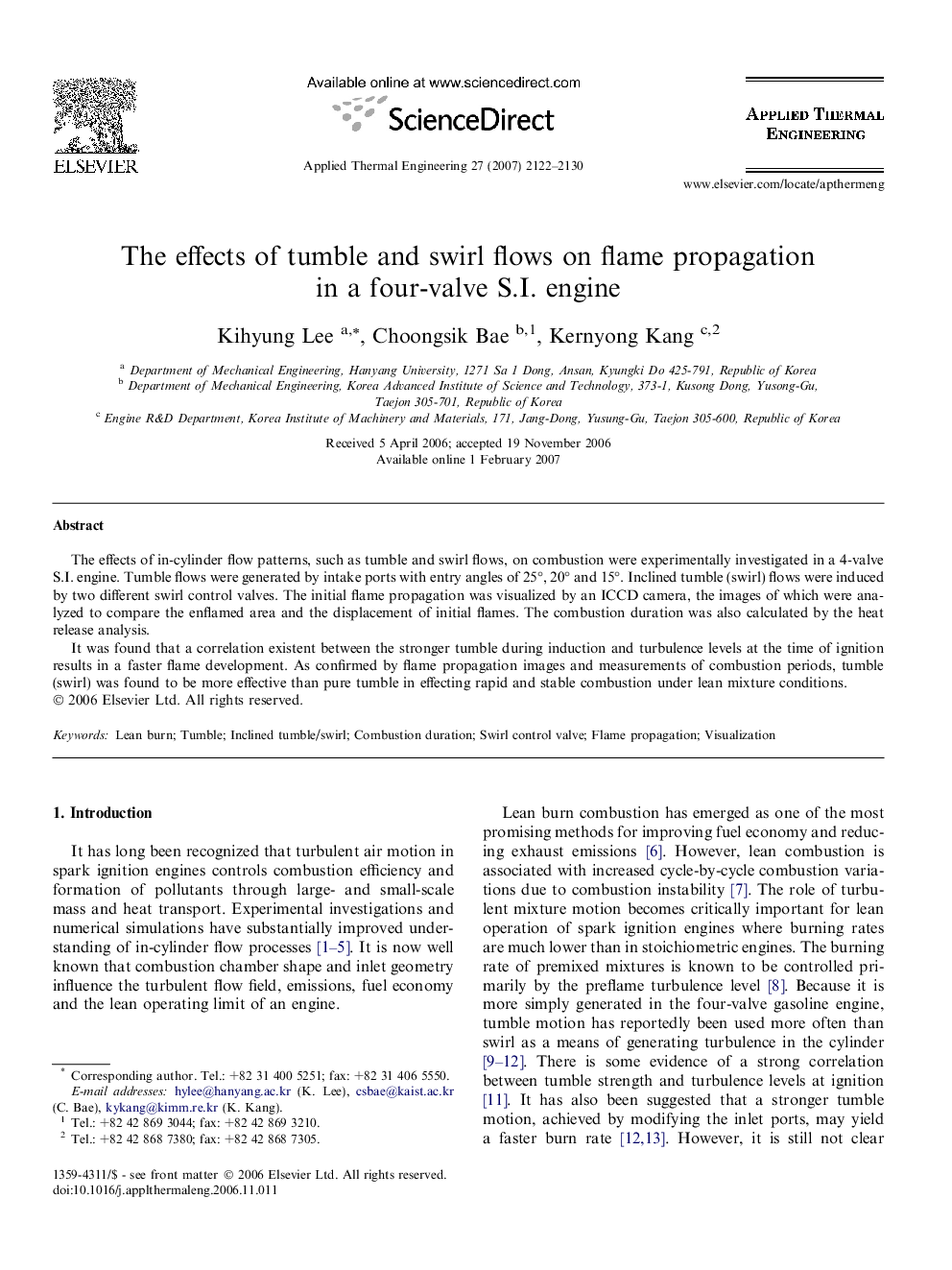| Article ID | Journal | Published Year | Pages | File Type |
|---|---|---|---|---|
| 649048 | Applied Thermal Engineering | 2007 | 9 Pages |
The effects of in-cylinder flow patterns, such as tumble and swirl flows, on combustion were experimentally investigated in a 4-valve S.I. engine. Tumble flows were generated by intake ports with entry angles of 25°, 20° and 15°. Inclined tumble (swirl) flows were induced by two different swirl control valves. The initial flame propagation was visualized by an ICCD camera, the images of which were analyzed to compare the enflamed area and the displacement of initial flames. The combustion duration was also calculated by the heat release analysis.It was found that a correlation existent between the stronger tumble during induction and turbulence levels at the time of ignition results in a faster flame development. As confirmed by flame propagation images and measurements of combustion periods, tumble (swirl) was found to be more effective than pure tumble in effecting rapid and stable combustion under lean mixture conditions.
